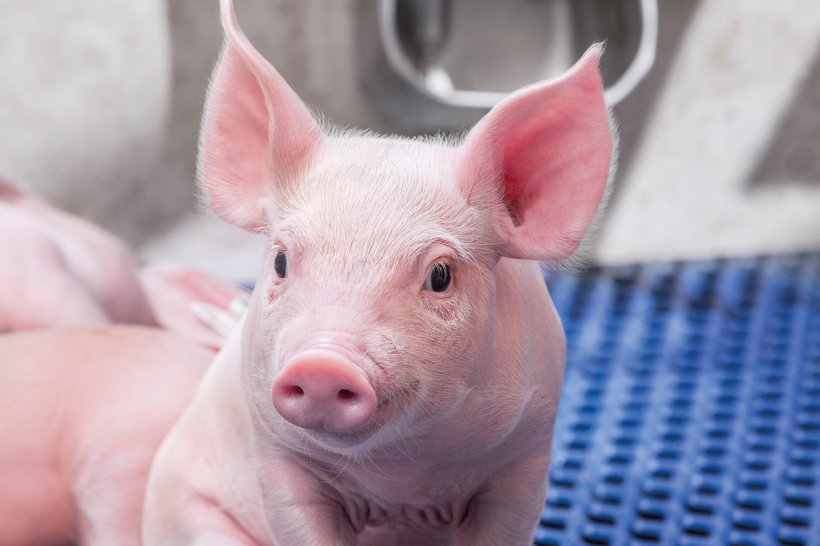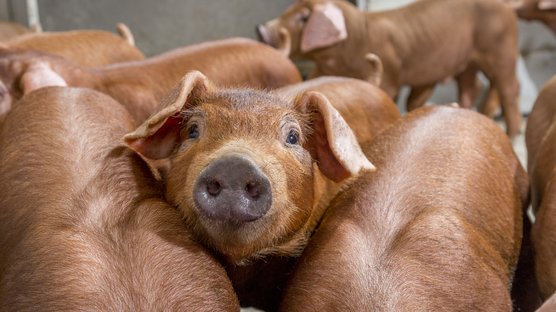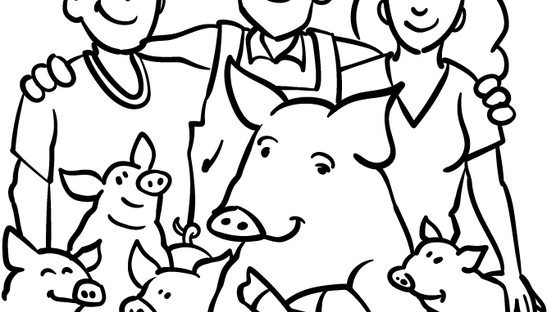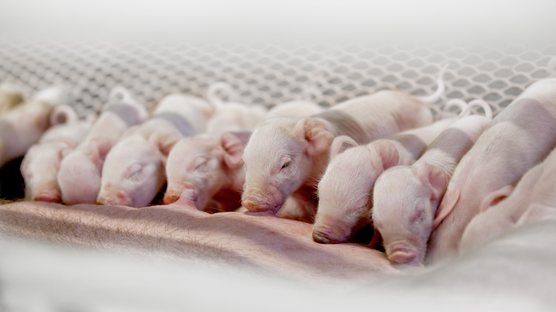
Published on March 5, 2025
Maximizing Sow Productive Lifetime for Sustainable Swine Production
Sow Productive Lifetime refers to the duration a sow remains productive before exiting the herd. Key factors such as health, nutrition, environment, management, and genetics significantly impact a sow’s longevity. Some genetic lines are known for their robustness, while others are more vulnerable to environmental challenges. Selecting for traits related to robustness, adaptability, ‘stayability’ or even social behavior ensures that sows thrive in diverse environmental conditions, contributing to a more sustainable and resilient herd with solid performance.
The Economic Impact of Sow Productive Lifetime
A sow’s economic contribution is best measured by the consistent production of high-quality piglets over an extended productive lifetime. Sow Productive Lifetime serves as a strong indicator of total profit for an individual sow and can be measured relatively easily.
As a trait, Sow Productive Lifetime focuses on the cumulative number of piglets a sow has weaned by the time of her removal. Sows that remain productive in the breeding herd for a longer period of time generally wean more piglets over their lifetime compared to those that exit after only a few parities. Thus, older sows are more likely to recoup the initial cost of gilt development.
Research from Iowa State University1 suggests that sows must reach at least their third parity to become profitable. Extending sow productivity beyond this point enhances overall profitability by increasing total piglet output and reducing costs associated with premature removals.
Average parity of removed sows may imply the level of profitability for a hog operation (table 1), although true economic value is attained when a sow weans as many full value piglets per litter as possible, repeatedly, without recycling, over multiple parities. A well-managed sow, that remains in the herd longer, reduces the need for frequent gilt replacements, leading to lower operational expenses (table 2) and increased system efficiency.
| Weaned piglets/sow | 13 | 13.5 | -0.5 |
|---|---|---|---|
| Average parity at removal | 5 | 4.5 | +0.5 |
| # lifetime weaned piglets | 65 | 60.75 | -4.25 |
| Market price of a weaned piglet | $45 | $45 | n/a |
| Income/weaned piglets/lifetime | $2925 | $2734 | $191 |
| Sow mortality rate | 10% | 7% | -3% |
|---|---|---|---|
| # replacement gilts needed (1000 sow farm) | 100 | 70 | 30 |
| Average cost | $35000 | $24500 | $10500 |
Managing Sow Retention and Culling Decisions
The better the management of sows, especially the replacement gilts, the higher the retention rate and the lower the involuntary culling rate. Retention rate is a key indicator of herd performance and lifetime sow productivity.
To enhance gilt retention within the herd, it is essential to breed structurally sound replacement females and adhere to recommended first-mating guidelines. This, in combination with adequate body condition throughout the first lactation, will influence the success of the next reproductive cycle. There are two important goals to keep in mind: 1) Serve ≥95% of all gilts entering the herd; 2) Of all gilts entering the barn, ≥75% must be able to stay in the herd to wean 3 litters.
The primary reasons for sow culling decision include reproductive failure, poor performance and locomotive degeneration2. In the best situation, we have a herd where we can choose which sows to remove (voluntary culling due to age or low performance) and minimize the rate of involuntary culling (due to reproductive problems and locomotion issues; Table 3). So, keeping accurate herd performance data is essential to define the best culling policy.
| Reason | Main factors |
|---|---|
| No heat detected in gilts | Gilt management |
| High IWM* | Body condition, feeding program, boar exposure |
| Return in heat/NIP* | Heat detection, AI* protocol |
| Vaginal discharge | Hygiene, AI* protocol |
| Abortions | Stress, health status |
| Body condition | Feeding program, lactation management |
| Poor udder quality | Gestation feeding program, farrowing management, flooring |
| Illness | Biosecurity, health management |
| Lameness | Gilt selection, flooring, body condition |
Table 3: Main reasons for involuntary culling.
Structural Soundness and Longevity
Structural and locomotive issues are the most common reasons for culling sows before their third parity. Sows which have significant feet and leg problems will most likely exit the herd before the third parity. As a female ages and becomes heavier, stress is placed on the feet and legs of the animal.
Overfeeding and high growth rates can exacerbate these problems. Locomotive issues may limit a sow’s ability to stand during heat, reducing reproductive success and access to feed and water. Selecting replacement gilts with proper conformation and good structural soundness helps mitigate these risks.
Reducing culling rates also minimizes the carbon footprint associated with gilt development and replacement, as fewer resources are required for rearing new breeding stock. Maintaining sows in commercial environments for longer periods helps improve overall sustainability.
To increase productivity, when culling a sow, the performance of the replacement gilt should be better than the projected performance of the current sow for the next litter. For example, see Figure 1. If the sow is being outperformed by the herd and gilt average, then it is time to replace her.

While not a culling reason, sow mortality is naturally linked to longevity. According to our findings3, Hypor Libra death losses are lower than the industry average, presenting a benefit to producers. The top farms globally using Hypor Libra sows have an average sow survivability rate of >95% (death loss rate of <5%) over the past eight years.
The death loss rate (which includes euthanized sows) for all farms in the Americas Libra Benchmark has been 38% lower than industry benchmark averages for the region of 13.6% over the past four years (Figure 2).

Enhancing Reproductive Performance and Welfare
Sow welfare is a key component of sustainable production. Breeding for stayability, supports improved reproductive performance and reduces early removals due to reproductive failure or poor performance. Sows that consistently wean large, robust litters contribute to a more stable and efficient production system.
Effective gilt development is crucial for reproductive success. Proper boar exposure, heat detection, and weight management at first mating ensure gilts enter the herd with strong reproductive potential.
Selecting for reproductive traits enhances long-term sow productivity. Proper nutrition management prevents excessive weight loss during lactation and ensures sows maintain body condition for future parities. A balanced feeding approach reduces feed waste and supports sustainable production.
Overfeeding gestating sows or maintaining them in an excessive body condition, can reduce feed intake during farrowing, leading to excessive weight loss and poor milk production. Additionally, initiating lactation feed too early (more than seven days before farrowing) can negatively impact productivity.
Maintaining good body condition after weaning allows sows to rebreed more quickly and contributes to large and uniform litters. In this way it will be easier to maintain a healthy breeding herd with reduced incidence of injuries such as shoulder sores. Considering animal welfare these are important considerations for a sustainable breeding program.
Proper Lactation Management
Proper lactation management supports piglet growth and helps maintain sow body condition, reducing the likelihood of reproductive failure in later parities. Some research indicates that teats suckled during the first lactation produce more milk and develop better in the second lactation compared to non-suckled teats4. So, for healthy udder development and maximized milk production it appears desirable to start milking all functional teats in parity one. A well-developed underline, with at least 14 but preferably 16 or more evenly spaced teats, is ideal for optimal milk production.
Genetic Selection for Longevity and Profitability
Modern breeding programs prioritize traits that contribute to sow longevity and overall system profitability. Hendrix Genetics Swine focuses on genetic improvement by selecting for stayability, weaning capacity, and reproductive efficiency, among many other traits, for its Hypor maternal products. By integrating sustainability principles into breeding and management strategies, we aim to develop breeding stock that thrives under commercial conditions while maintaining efficiency and profitability. A well-balanced selection approach ensures that sows remain productive for extended periods, ensuring economic viability, environmental responsibility, and enhanced animal welfare.
Conclusion
Sow Productive Lifetime is a crucial indicator of economic, environmental, and social sustainability in swine production. By prioritizing longevity, reproductive efficiency, and animal welfare, producers can enhance herd performance while minimizing costs and environmental impact. Choosing robust and high-performing sows improves system stability, resulting in a better return on genetic investment and contributing to a more sustainable future for the industry.
References
- Stalder K.J. 2009. Calculating payback parity for replacement gilts. National Hog Farmer. Retrieved from http://nationalhogfarmer.com/genetics-reproduction/0109-calculating-payback-parity.
- Serenius, T. and Stalder, K. J. 2006. Selection for sow longevity. Journal of Animal Science. 84:E166-E171.
- Hypor Replacement Strategy Manual Version 2.0, 2024.
- Farmer C., Palin M. F., Theil P. K., Sorensen M. T., & Devillers N. 2012. Milk production in sows from a teat in second parity is influenced by whether it was suckled in first parity. Journal of Animal Science. doi:10.2527/jas.2012-5127.



